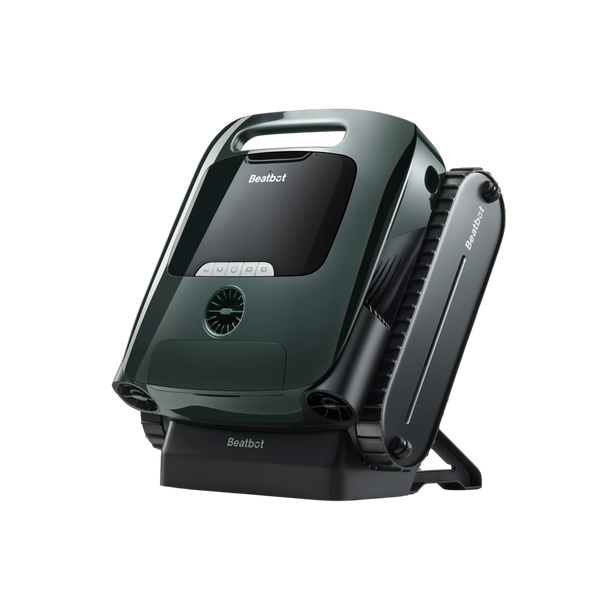Safeguarding Your Pool and How to Keep Frogs Out of the Pool
Have you ever noticed the unsettling croaking around your pool? If so, it's a sign that your little oasis might be under threat from frogs. While these tiny creatures are undeniably cute, they can indeed turn your pool into a mess. Therefore, it's best to get them out of your pool before they take over completely.

Why wouldn't you want frogs in your pool?
Frogs have limited jumping abilities. Once they're in your pool, they can't find a way out and end up swimming endlessly until they become exhausted and die. As a result, you might have to deal with the unpleasant discovery of several frog bodies in your pool every morning. This is not only psychologically discomforting but also contaminates your pool.Moreover, frogs can carry harmful bacteria like Salmonella and lay eggs in the pool. These eggs hatch into tadpoles that leave behind residue promoting algae growth. So, it's best to keep frogs away from the water's surface.
Keeping Frogs Out: The Pool Owner's Guide
If you've ever spotted a frog in your pool, you're not alone. Pools can be a frog's paradise, but there are ways to make your aquatic oasis less alluring to these amphibious intruders. Here’s how to turn the tables and keep frogs at a hop and a skip away.
Rescue and Relocate Frogs with a Skimmer
Frogs that find their way into your pool can't hop out on their own. If you spot a frog paddling about, gently scoop it out with a pool skimmer or a bucket. Once the frog is safely out of the water, find a more suitable home for it in a different part of your yard or a nearby natural water body. If you come across frog eggs or tadpoles, carefully transfer them to a bucket of clean water and then to a different water source, or consult local animal control for guidance.
Create a Frog-Friendly Pond
To divert frogs from your pool, consider building a dedicated frog pond in a quiet corner of your yard, far from your swimming area. Design the pond with shallow areas for easy access and deeper spots over 12 inches for safety. Enhance the area with native plants, large rocks, and logs to provide shelter. If you are seeking for a budget-friendly option, a bird bath or a small kiddie pool can serve as a makeshift frog habitat.
Deter Frogs with Citric Acid Spray
Frogs are sensitive to touch, and an acidic solution can be a deterrent. Mix about ½ cup (125 g) of citric acid powder with 32 fluid ounces (950 ml) of water in a spray bottle. Apply the solution around your pool and on nearby plants. Reapply every two weeks if frogs persist. Be mindful that citric acid can harm sensitive plants, so rinse them with water after an hour. When handling citric acid, protect yourself with long sleeves, pants, closed-toe shoes, gloves, and safety glasses. As an alternative, a mix of equal parts vinegar and water can also serve as an effective, acidic repellent.

Eliminate Standing Water
Frogs are on the hunt for hydration and a place to lay their eggs, and your pool could be an open invitation, especially when it's the only water around during dry times. To keep frogs from making a splash in your pool, ensure that any other water sources on your property are covered or eliminated. This way, you can direct their attention elsewhere.
Maintain a Tidy Pool Area
A frog’s idea of a perfect home includes lots of greenery and places to hide. By keeping the area around your pool neat and free of overgrown plants, you can make it less frog-friendly. Regularly cleaning your pool to prevent algae growth also helps, as a clean pool is less likely to be seen as a suitable habitat.
Dim the Lights
Frogs are cold-blooded creatures that seek warmth, especially on cool nights. The lights around your pool and the warmth they emit can be a beacon for frogs looking to warm up. By minimizing the lighting around your pool area, particularly at night, you can make it a less attractive spot for frogs to gather.
Control Insect Populations
Frogs have a diet that consists mainly of insects and other small prey. If your pool lights or water surface are attracting bugs, you might also be inadvertently inviting frogs. By managing insect populations with repellents or bug zappers, you can reduce the availability of frog food, making your pool a less desirable dining destination for these amphibians.By taking these steps, you can transform your pool area into a place that frogs will find less appealing, ensuring that your pool remains a frog-free zone.
Relative Blogs
About the author



















